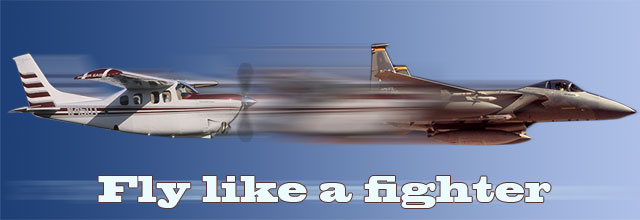
During my instrument/cross-country phase of training in the T-38, we flew some two-sortie out-and-backs originating from our home base. On one of these, I was scheduled to fly from Vance Air Force Base in Enid, Oklahoma, to Offutt Air Force Base in Omaha, Nebraska. Military operations areas surround Vance to the north, west, and east, so my departure from Runway 35 was to initially fly outbound on a radial to the northwest between the MOAs while eventually climbing to Flight Level 350.
 In the T-38, our initial climb speed was 300 knots up to 10,000 feet msl; then we would lower the nose and accelerate to 400 knots, continuing the climb at that airspeed. Because indicated airspeed decreases with altitude, maintaining 400 knots all the way to level off was not possible. At some point in the climb we would reach our climb Mach number and then maintain a constant Mach climb to our level off.
In the T-38, our initial climb speed was 300 knots up to 10,000 feet msl; then we would lower the nose and accelerate to 400 knots, continuing the climb at that airspeed. Because indicated airspeed decreases with altitude, maintaining 400 knots all the way to level off was not possible. At some point in the climb we would reach our climb Mach number and then maintain a constant Mach climb to our level off.
I was somewhere above 10,000 feet, heading northwest, when I was cleared direct to the Wichita VOR, north-northeast of Vance. This would cut me through the MOA to the north of Vance. I later learned that there were no aircraft in the north MOA at that time.
The next day the weather elsewhere was bad, so I scheduled the same route to Omaha for another out-and-back mission. This time on initial contact with departure control, again from Runway 35, they cleared me direct to the Wichita VOR and I was given a climb restriction to be at or above Flight Level 240 by 24 DME north of the Vance Vortac. This equates to a climb angle of about 10 degrees. Shortly after takeoff, our initial climb angle at 300 knots is 13 degrees, so I accepted the clearance, tuned in the Wichita VOR into the single VOR we had in the airplane, and continued northbound.
We are definitely creatures of habit, so at 10,000 feet I lowered the nose to accelerate to 400 knots, then started my climb again at an obviously much reduced climb angle given the higher airspeed. Passing about 18,000 feet, I suddenly felt the throttles slam forward into full afterburner, the stick yank back out of my hand, and the nose pitch up to about 60 degrees nose high as the instructor called out “I have the aircraft.” We didn’t make our climb restriction, so the instructor was nervously trying to clear things up with departure control. He did. The rest of the flight was fine. I still got an “Unsat” on the ride.
There was a lot to learn. First, after I tuned the Wichita VOR and turned direct, I should have tuned the Vance Vortac back in because that is what my climb restriction was based on. Next, for a constant airspeed climb, at higher altitudes the climb angle must decrease. I never would have made the climb restriction at 300 knots. My best chance would have been to climb at Vx, or best angle of climb, which was about 265 knots. I didn’t think of it at the time. Lowering the nose at 10,000 feet to accelerate to 400 knots sealed my fate to failure. Finally, years later, I also realized that the instructor let me fly way too far, opening himself up for a violation.
The best advice, however, was from my flight commander, who said that once I got the initial clearance all I had to say was “Unable.” This is a great vocabulary word for your flying toolkit, and one I still use to this day.
Larry Brown of Colorado Springs, Colorado, is a retired Air Force F-15 pilot who is using the lessons he learned as a fighter pilot as a GA pilot in his Cessna P210. Brown, who has 2,900 hours total time during his 35 years of flying, also was an instructor pilot and flight examiner in the Air Force T-38 and instructor pilot in the T-52, the military’s version of GA’s Diamond DA40. See previous installments of “Fly like a fighter.”



